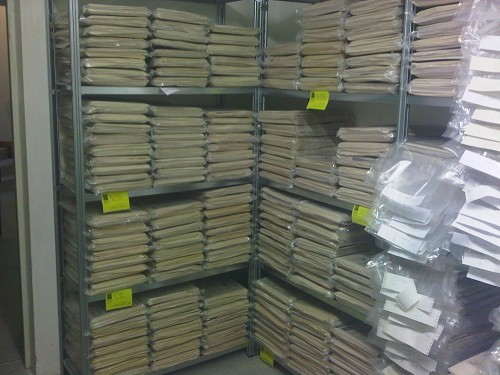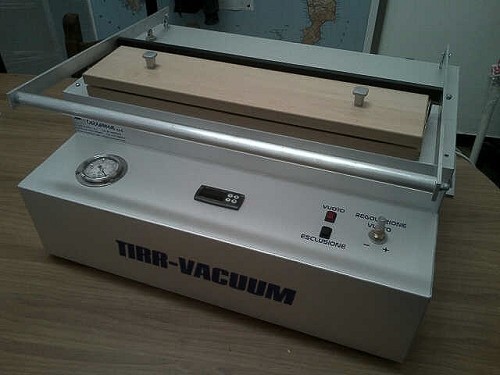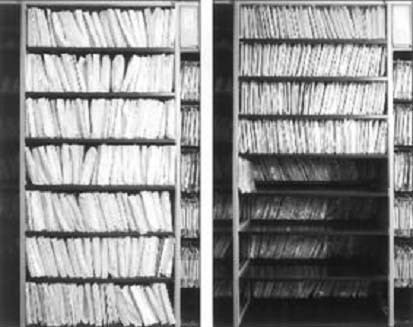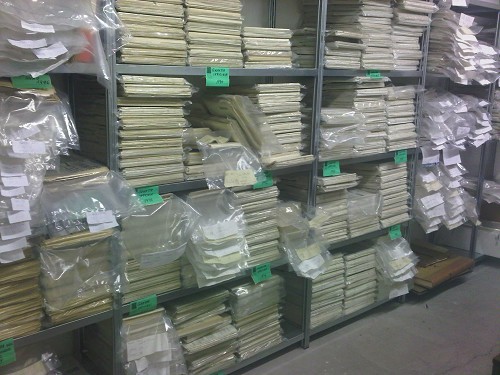
conservazione sottovuoto | etichette libri personalizzate | varco rfid biblioteca | scanner metis | Vaccuum packing
TIRR-VACUUM
Vacuum Storage
The preservation of modern paper materials, (newspapers, magazines and documents in general) poses several problems: modern material is much more delicate. In addition, many are their enemies: dust, humidity, pollution, insects, microorganisms and... water.
To resolve these problems, in a not too expensive manner, we have developed the
TIRR-VACUUM system.
With TIRR-VACUUM, it is now possible to vacuum pack entire collections in a gas barrier transparent film plastic bag; in this way the material is protected from degrading agents.
The machine differs from those used in the food industry due to the fact that the vacuum, inside the envelopes, it is not obtained by classic crystal bowls. however, different technical solutions were adopted, to achieve the same result with very small dimensions and weight.
The Vacuum inside the envelopes is produced forcing air to flow through the two layers which make up the film. This is achieved by giving the surface of the plastic a particular geometry during production of the film and its production into envelope.
TIRR-VACUUM is somewhat slower than the traditional bell machines > However conservation institutes do not generally need to produce great quantities of packaging (as in the food industry for example) It is favourable therefore the reduction of space wastage, weight and ease of use.
In addition TIRR-VACUUM offers users a great advantage: reducing the size of the products once packed.
With vacuum packaging, depending on materials packed, a volume reduction of between 20-60 % can be obtained.
The envelopes also allow numerous re-sealings.
We have therefore developed a new system for the management of contemporary material in a convenient way with which you can "bind" vacuum (also, upon request, in an inert or sterile atmosphere) daily, weekly and monthly magazines and other publications.
The vacuum gives the printed material the same consistency of bound material
The thickness (especially that of newspapers) is reduced to an appreciable extent (approximately 30-50%).
The material can be stored vertically and horizontally in boxes making it easy to consult, as the envelopes can be opened multiple times.
ADVANTAGES
- Space saving 30-50%.
- Maintain high levels of conservation
- Interruption of the production of dust from the oxidation of documents.
- Paperwork disinfestation capability
In the Special custom-made polyethylene enclosures the preserved material is protected from Dust, biological agents, humidity, pollution.
And now it’s finally possible to perfectly store, preserve and protect from degradation all printed material to be archived.
- Lack of prevention and the unavailability of a suitable environment for proper storage will bring frequent need for intervention with restoration, pest control, disinfecting and dusting.
- These interventions, in the case of libraries, are very important, above all in terms of costs.
- The same goes for modern material such as newspapers, magazines, journals and documents in general.
- The prints are usually kept horizontal.
- Wrapped with wrapping paper.
- Or bound.
These solutions have several problems:
- Limited protection from biological agents (insects, fungi, molds and bacteria), humidity, air pollution and dust.
- Binding is expensive and alters the originality of the issues, while conservation with wrapping paper makes them difficult to consult



















